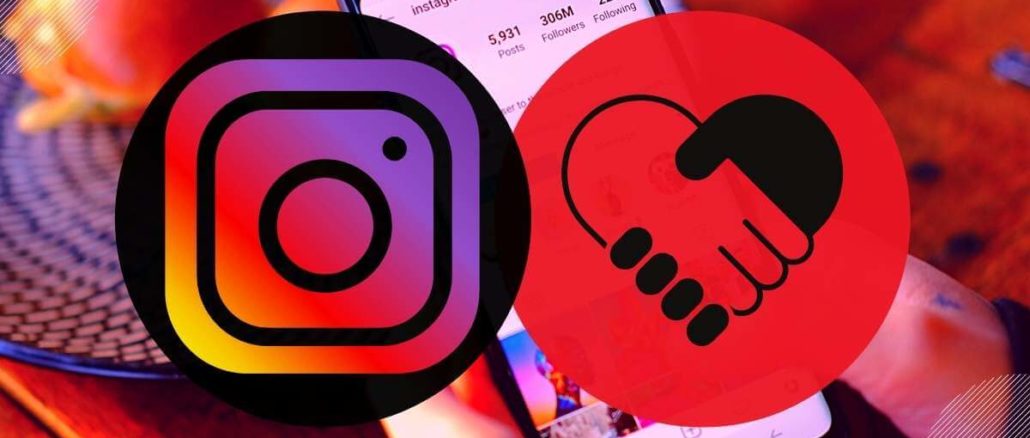
Forming warm market relationships creates new connections, enhances recognition, and encourages sales. You create a virtuous cycle of perception, trust, and excitement that increases sales when you use your experience to inform your art marketing skillsets. Some artists and creatives are using Instagram to establish relations and find buyers.
Warm Marketing for Artists Is a Timeless Way to Sell Art
Nothing happens independently. There are triggers, actions, and reactions. In the Art Marketing Toolkit, weekly live sessions, and the threads in our Facebook group, local and warm marketing virtues are topics I champion with gusto regularly. That’s because warm marketing works for artists. After all, it lowers barriers to sales efficiently.
Your warm market is enormous, and you can’t reach them all at once, so don’t try. Instead, simplify. Get to know people a bit at a time, whether IRL (in real life for non-hipsters) or online through a digital connection. As they begin to understand you, their appreciation of your art happens as well. To foster such relationships, do and share whatever you can to strengthen your bond.
Instagram Has the Hot Hand for Now.
I’m finding examples of how artisans and entrepreneurs are practicing warm and local market marketing where they hang out online. Instagram is a favorite now. This post from the Business of Home (BOH) blog is an example, “Who is the Instagram client? Do social media followers actually lead to new work? These designers say yes.”
In the BOH post, interior designers explain how they are finding clients on Instagram. It’s not magic. They are making connections through shared interests. As with most relationships, the progressive online process mimics in-person behavior. A series of personal interactions and small sales leads to greater possibilities.
IRL and Online Relationships Are Both Producing Art Sales.
There is an ongoing blurring of the line between IRL and online relationships for artisan suppliers and their customers. I’m sure the dynamic exists in other markets as well. Interior designers and artists create relationships that start online through Instagram or other social media and evolve into product and service sales that often escalate to higher-priced items.
Cory Huff provides stories and evidence of artists making connections and selling work using Instagram and other social media through his How to Sell Art Online course. While Insta is the hot topic, I believe any form of social interaction on any platform, live or digital, can produce excellent results. What matters is the connection and not the medium. However, some sites offer better advantages to artists, as with Instagram, which is all about eye candy. Still, using the one you are most comfortable with personally is the one you will probably test the most and thus produce the best results.
Are the BOH Designers’ Results Reproducible?
What the interior designers in the BOH post are doing to create connections can likely be systematized and made repeatable. But that’s a worthy topic for a different post. We are exploring here is how humans develop their behavior and marketing online to model their offline activities.
Humans and marketers are evolving in so many ways. Covid, as disastrous as it has been, has forced more new behaviors with some sticking permanently. It’s become apparent that the desire to have authentic connections to the people whose products and services fill our personal needs is vital to sheltered humans. It seems the desire to connect is more robust now than ever. Relationships such as the BOH designers’ experience lead to building trust, sales, and durable connections for artists, artisans, designers, and boutique service operators of all sorts.
Clarity on the Benefits of Warm Marketing.
While it’s not clear now to all about warm markets in IRL and online, I’m finding the artists who hang with me in the Art Marketing Toolkit Project are awakening to the value of warm and local marketing. We see evidence in members’ sales that online shopping is a mix of global and local connections, proving the effectiveness of warm marketing.
Warm and local marketing concepts began as geographically contained marketing practices. Today, the internet removes the boundaries for warm marketing techniques, making it both global and digitally local. There will always be considerable power in proper local marketing in your neighborhood and region. But now more than ever, fewer restrictions, geographical and otherwise, limit artists from selling wherever their buyers reside.
“Grow Your Own” Philosophy Gains Strength.
The more I teach artists about tools, tips, and techniques to market art, the more I see the best way for them to expand their businesses is to create in-person and online connections. My simple mantra is “grow your own.” Find your buyers and sell to them directly. Wholesalers and retailers are evolving in ways that don’t always benefit independent artists—they are responding to market conditions themselves. It’s time for artists to look out for themselves.
The subtitle of my 2013 Guerrilla Marketing for Artists book is How 100 Collectors Can Bulletproof Your Career. I base the premise on the Rule of Thumb that says a typical artist can make 1,000 originals in a lifetime. Of course, your mileage will vary. If 100 collectors buy between 300 and 500 of the artist’s works, they pave the way for a degree of predictable income and success throughout an artist’s career.
The Genius Roots of the 100 Collector Theory
My ideas for the 100 Collector Theory come from more than 30 years of experience as a professional art marketing adviser. I am also the beneficiary of Marshall McLuhan‘s deep thinking. The Canadian philosopher and media futurist influences my perspective. He coined the term “The Global Village” and wrote a book by the same name about it. In his 1967 book, The Medium Is the Massage: An Inventory of Effects. He gave us this thought:
“Ours is a brand-new world of all-at-once-ness.’ Time’ has ceased, ‘space’ has vanished. We now live in a ‘global village’…a simultaneous happening.” – Marshall McLuhan
McLuhan was reacting to the growth of broadcast television’s influence. One can imagine how he would marvel at today’s communication and technological advances.
The Emergence of the 1,000 True Fans Thesis.
Fast forward 40 years to 2008 when another brilliant futurist, Kevin Kelly, presented his 1,000 True Fans thesis. Here is a quote from it:
To be a successful creator, you don’t need millions. You don’t need millions of dollars or millions of customers, millions of clients, or millions of fans. To make a living as a craftsperson, photographer, musician, designer, author, animator, app maker, entrepreneur, or inventor, you need only thousands of true fans. – Kevin Kelly
Direct Patronage is the Bomb.
I took Kevin Kelly’s consummate hypothesis and simmered it down to 100 collectors for visual artists selling originals. Visual artists need fewer buyers than any of the other arts. As outlined above, a few hundred loyal buyers can support them nicely. I call such support direct patronage. With it, artists have the luxury of choosing which other third-party distribution channels to use, if any.
Some Artists Don’t Need Fans.
Here’s something obvious that never gets a mention. Many artists are truly okay without having a thousand loyal fans or even one hundred collectors. They accept such support, but they have consciously or unconsciously decided it’s not worth the bother to work for it. Yes, acclaim and money are richly rewarding, but they come with strings many artists won’t touch, like poison ivy.
For them, making art for art’s sake or themselves is the thing. They purposely avoid getting wound up about business. Instead, many work side-hustle alternatives as teachers, picture framers, in non-art-related fields, or they manifest unique ways to make their art pay without being in the system (on the hamster wheel), per se.
Living One’s Best Artist’s Life Is Deeply Personal.
What’s cool, fun, and extraordinary is they live their best artist’s lives on their terms. Thinking about artists living their lives in such fashion inspired me to write The Artist’s Manifesto. I love the idea of artists living the dream the way they want. It’s a concept we turn to and frequently promote in the Art Marketing Toolkit Project.
God Bless Evangelists on Instagram and Elsewhere.
While loping down the Kevin Kelly rabbit hole, I found this fascinating mention about discovering artists on an unlikely source. It’s a short, powerful read into the mind of an art lover of a different sort. The enlightenment from reading the post is artists don’t think of people like the author when they draw up their avatars. After reading it, I think they should.
The author is Claudia Dawson who is a prolific writer, marketer, pundit, and influencer. I was so inspired by reading Claudia’s “Discover new artists” thoughts on Recomendo.com. I screen-grabbed it and wrote a Facebook post with Ten Lessons I Learned from reading it. Then, still resonating with inspiration, I posted a more in-depth eight-minute screen recording of the Ten Things I Learned piece in the Comments section below the post.
Leonora Carrington was a productive and renowned artist who died at age 94 in 2011. Ten years later, through her passion for Carrington’s work and position as a powerful influencer, Claudia Dawson’s evangelism creates new interest and fans for Leonora Carrington’s art.
Two Questions
I ask these questions, not expecting you to answer me directly. Instead, I hope you will ask and answer yourself honestly.
- How do you get your work to market? Are you satisfied with your artist’s life?
- If there is room for improvement, you’re not alone. It’s all of us.
The Art Marketing Toolkit Project is a private community of artists learning art marketing knowledge to use in their businesses. We also explore the value of living one’s best artist’s life. Satisfaction is different for everyone, so what you choose is unique to you. What matters is you making choices to satisfy your needs as an artist and human. When you take your spot, it’s yours. No one else can have it nor move you off it without your permission.
By talking about what it means to live one’s best artist’s life, my members and all artists raise self-awareness of what is truly valuable to them in finding joy and satisfaction for their creativity. For some, it’s commercial success and acclaim, while others want to make art for art’s sake. For most, it’s somewhere in between. The goal is to find what works for you in life and business as an artist. There are no poor choices when the decisions you make work for you. We’re here to help you gain clarity and find effective ways to sell your art and live your best artist’s life.
You Are Cordially Invited
Please accept my sincere invitation to join the Art Marketing Toolkit Project. It’s only $4.99 per month with no contract. It’s the best deal on the planet for artists. You have nothing to lose and so much to gain. Imagine your reply to those Two Questions is a big smile as you say, “Very Well!” You can get to such a state of grace and satisfaction when you know what living your best artist’s life means to you. We’ll help you.







Be the first to comment